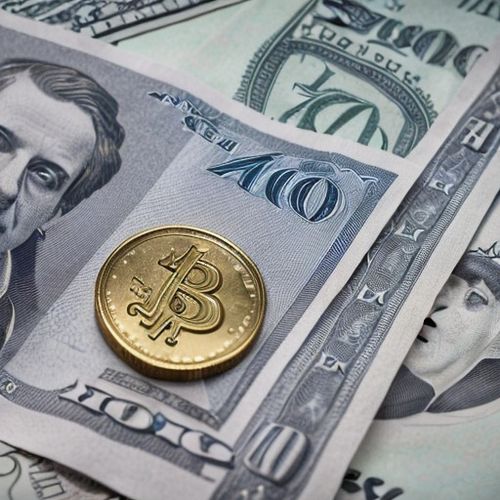The global semiconductor industry is undergoing a significant transformation as Japan's recent export controls on key chip-making materials send ripples through supply chains worldwide. These restrictions, targeting materials essential for advanced semiconductor manufacturing, have forced multinational corporations to reevaluate their sourcing strategies and accelerate diversification efforts. The moves come at a particularly sensitive time for the tech sector, which is still recovering from pandemic-era disruptions while preparing for the next generation of computing technologies.
At the heart of the matter are three specialized materials where Japan commands dominant market share: photoresists, fluorinated polyimides, and hydrogen fluoride. These substances play critical roles in producing cutting-edge chips, with applications ranging from smartphones to military systems. Japanese manufacturers have spent decades perfecting these materials' purity and performance characteristics, creating what many considered an unassailable technological lead. The export controls, while not outright bans, introduce lengthy approval processes that effectively slow shipments to certain destinations.
Industry analysts observe that these measures have created immediate bottlenecks for foundries outside Japan, particularly those specializing in sub-7 nanometer process nodes. Several fabrication plants in Taiwan and South Korea reportedly had less than two months' inventory when the restrictions took effect, triggering emergency meetings with alternative suppliers. The situation highlights how concentrated certain segments of the semiconductor supply chain remain, despite years of discussion about diversification following previous trade disputes.
The geopolitical dimensions of these export controls cannot be overlooked. Coming amid broader tensions over semiconductor technology transfers and national security concerns, Japan's actions align with coordinated efforts among allied nations to restrict access to advanced chip-making capabilities. This represents a strategic shift for Tokyo, which had traditionally prioritized commercial interests over technology containment policies. The change reflects growing consensus that semiconductor leadership constitutes a core national security priority in an era of great power competition.
Supply chain responses have varied dramatically by region and corporate strategy. Some Chinese semiconductor firms are reportedly accelerating plans to qualify domestic material suppliers, though industry experts caution this process typically requires 12-18 months even under ideal conditions. European and American chipmakers appear to be pursuing a dual-track approach - securing short-term supplies through Japanese partners while investing in alternative production sites in Southeast Asia and North America. Notably, several multinationals have quietly increased orders from South Korean material suppliers, testing their ability to meet stringent purity requirements.
The long-term implications for the semiconductor equipment ecosystem could prove profound. Materials innovation has always been the silent enabler of Moore's Law advancements, with each new process node demanding more exacting chemical specifications. If the current fragmentation persists, we may see the emergence of regional material standards that could complicate global chip production networks. Some industry veterans warn this could reverse decades of progress toward harmonized technical specifications that allowed for seamless international collaboration.
Market dynamics are already shifting in response to these pressures. Specialty chemical companies in Germany and Belgium have seen stock prices rise as investors anticipate increased demand for their alternative offerings. Meanwhile, Japanese material suppliers face difficult questions about how to maintain technological leadership while complying with export restrictions that may limit their access to crucial feedback from leading-edge foundries. This delicate balance between commercial success and national priorities will likely define the sector's trajectory for years to come.
Beyond immediate supply concerns, the export controls have reignited debates about inventory management philosophies in the semiconductor industry. The prevailing just-in-time model, optimized for cost efficiency during stable trading periods, now appears vulnerable to geopolitical shocks. Some manufacturers are reconsidering strategic stockpiling approaches last seen during the Cold War, though the capital intensity of such moves presents significant barriers. Insurance markets are responding accordingly, with premiums rising sharply for policies covering supply chain disruptions related to advanced materials.
The human capital dimension adds another layer of complexity. Japan's material science expertise represents generations of accumulated knowledge, much of it tacit and difficult to replicate elsewhere. As companies scramble to develop alternative supply chains, they're discovering that even with sufficient funding and equipment, reproducing Japan's material quality requires attracting specialized talent - a scarce commodity globally. This has triggered aggressive recruitment campaigns targeting Japanese engineers and chemists, along with increased investment in materials science programs at universities from Singapore to Arizona.
Environmental considerations further complicate the supply chain reshuffling. Japan's semiconductor material production benefits from exceptionally clean manufacturing processes developed in response to the country's stringent environmental regulations. New entrants face not only technical hurdles but also the challenge of meeting increasingly rigorous sustainability standards demanded by both regulators and corporate buyers. This creates potential trade-offs between supply chain resilience and environmental performance that companies must carefully navigate.
Looking ahead, the semiconductor industry appears poised for a period of accelerated innovation in materials science, driven by both necessity and opportunity. While the current disruptions cause short-term pain, they may ultimately spur healthier diversification of critical supply chains. However, the transition period carries substantial risks - including potential quality inconsistencies and production delays - that could temporarily slow the pace of technological advancement across multiple industries dependent on cutting-edge chips.
The full impact of Japan's export controls will likely take years to fully manifest as alternative supply chains develop and geopolitical alignments continue evolving. What remains certain is that the era of taking critical semiconductor materials for granted has ended, with profound implications for how the tech sector manages risk, invests in innovation, and navigates the intersection of commerce and national security priorities. The companies that successfully adapt to this new reality may gain significant competitive advantages in the coming decade of technological competition.

By Ryan Martin/Apr 7, 2025

By Ryan Martin/Apr 7, 2025

By David Anderson/Apr 7, 2025

By Olivia Reed/Apr 6, 2025

By Daniel Scott/Apr 6, 2025

By Victoria Gonzalez/Apr 6, 2025

By John Smith/Apr 6, 2025

By Elizabeth Taylor/Apr 6, 2025

By James Moore/Apr 6, 2025

By Megan Clark/Apr 6, 2025

By Daniel Scott/Apr 6, 2025

By William Miller/Apr 6, 2025

By Samuel Cooper/Apr 6, 2025

By Amanda Phillips/Apr 6, 2025

By Natalie Campbell/Apr 6, 2025

By Noah Bell/Apr 6, 2025

By Elizabeth Taylor/Apr 6, 2025